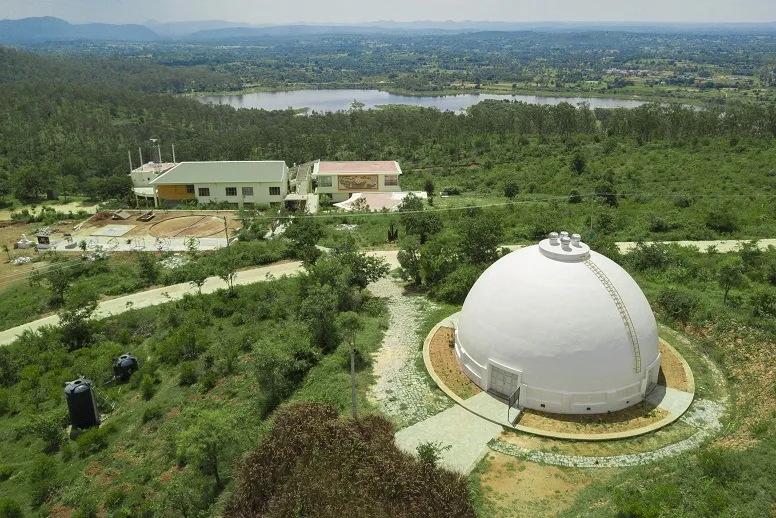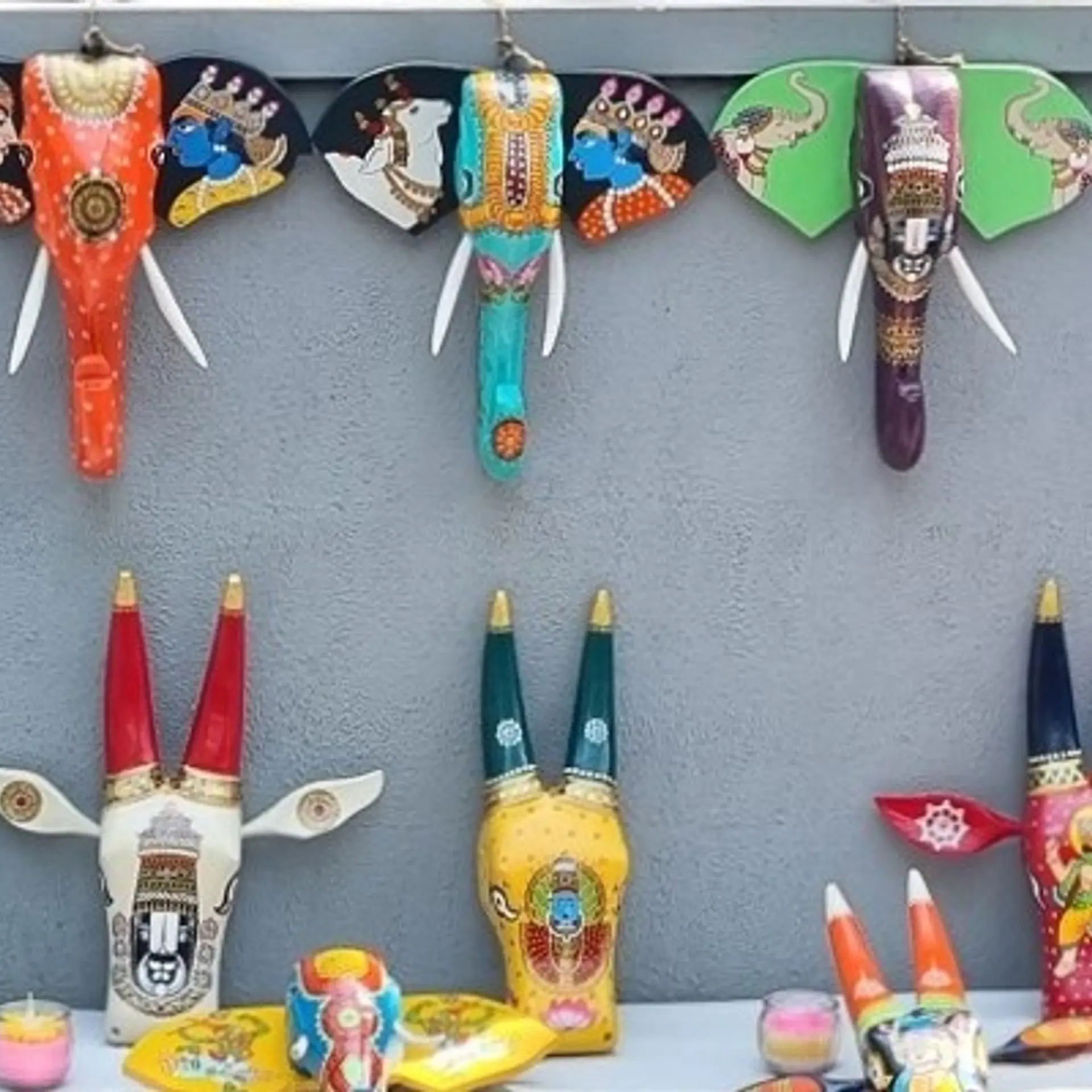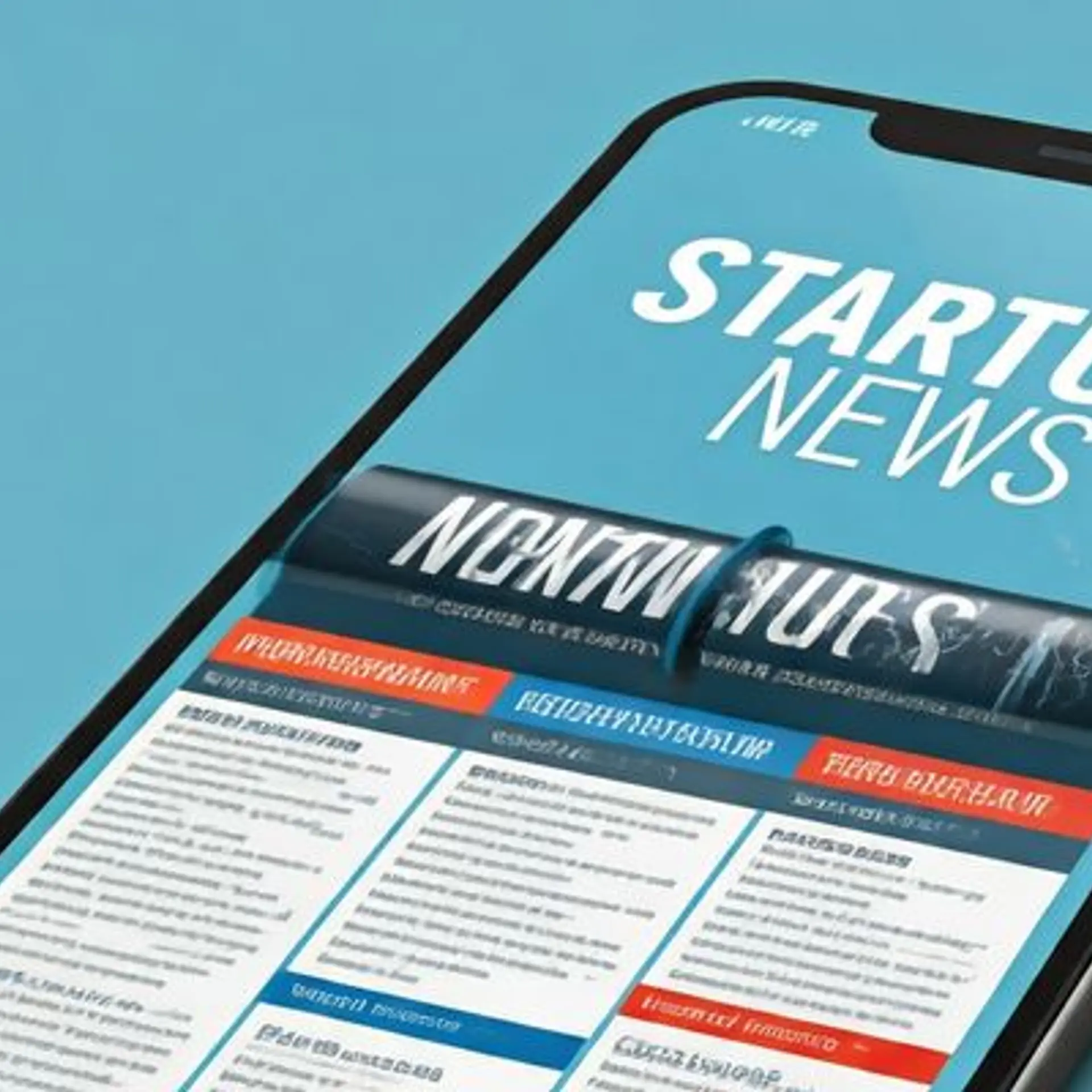Innovation and education are about Aah, Aha, and Ha-ha: Ramji Raghavan, Agastya International Foundation
This former international banker returned to India from the US to improve science education in rural areas, and promote a spirit of curiosity, collaboration, and empathy among students.

Ramji Raghavan is Founder-Chairman at Agastya International Foundation (AIF) in Bengaluru. He graduated from London Business School, University of Delhi, and Rishi Valley School. He was earlier Vice President of Mergers and Acquisitions at Citibank. He founded AIF in 1999 to promote the spirit of inquiry, experimentation, and responsibility along with science and art education in India.
Ramji joins us in this extensive interview on the scope of AIF’s activities, challenges in India’s education system, and the joy of seeing children become innovators themselves.
YourStory: What was the founding vision of Agastya? What gaps and opportunities does it address?
Ramji Raghavan: Agastya’s vision of a creative India is spelled out as ‘A nation of creators, innovators, and solution seekers who are humane, anchored and connected.’ Agastya’s mission is to spark curiosity (Aah!), nurture creativity (Aha!) and instill confidence (Ha-Ha!) in underprivileged children and government school teachers.
There are a number of gaps that we are addressing: lack of spirit of enquiry (curiosity), lack of creativity, de-motivated students with low self-belief, lack of hands-on labs, lack of real-world application of knowledge, lack of opportunities to learn collaboratively, and lack of stimulating and inspiring interaction between teachers and children.
We create an interactive, hands-on and inspirational learning environment through simple, interesting, counter-intuitive science experiments and projects, and promote peer-to-peer learning as well as hands-on teacher education, With this, Agastya provides a much-needed solution in an affordable way for the problems and challenges faced by the education system.
Agastya aims to trigger five key shifts: ‘from yes to why,’ ‘from looking to learning to observe,’ ‘from being passive to learning to explore,’ ‘from being textbook-bound or internet-hooked to being hands-on,’ and ‘from fear to confidence.’
YS: What were you doing earlier, and how did you move on to start Agastya?
RR: I spent a decade-and-a-half as an international banker. I was determined like my father to become the CEO of a company. The idea of a school to foster creativity (‘Shangri La’) was a dream project of mine since my school and college days.
I took the decision to quit my career in banking in 1998 and started Agastya in April 1999. Founding Trustees include K.V. Raghavan, ex-chairman EIL; P.K. Iyengar, ex-chairman Atomic Energy Commission; S. Balasundaram, ex-principal, Rishi Valley School (my alma mater); and Mahavir Kumar, Bengaluru-based stock broker.
Through a presentation to the government of Andhra Pradesh and following several months of training teachers in AP, Agastya acquired 172 acres of barren waste land in Kuppam, AP to build its ‘Taj Mahal of creativity.’ We ran out of money to build buildings on campus, so we decided to take education to the villages with a mobile science lab. This was the beginning of our outreach strategy.
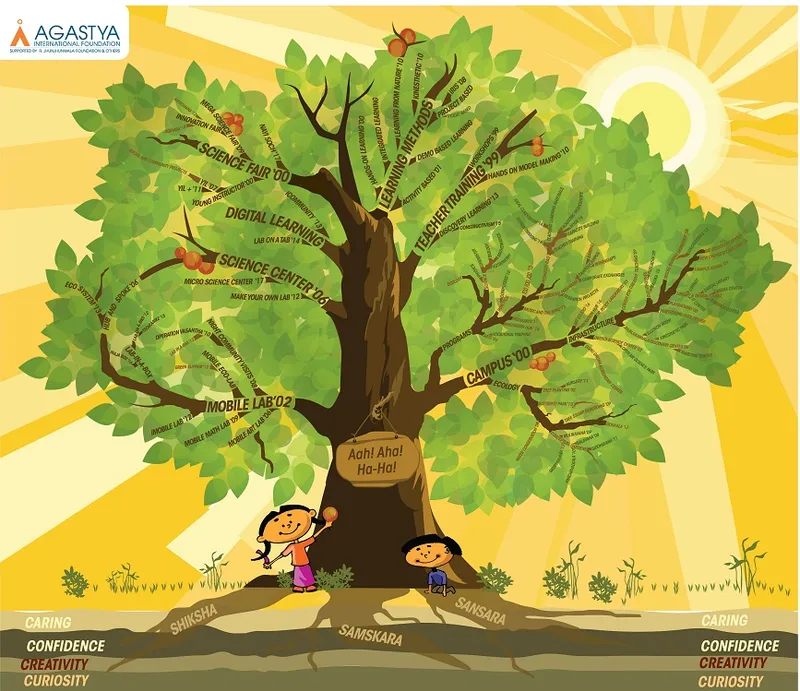
YS: What are your core activities these days?
RR: Agastya reaches face-to-face, close to 1.5 million children and 250,000 teachers every year (to date we have reached over 10 million children and 300,000 teachers). That makes it the world’s largest hands-on, mobile science programme. We have a wide range of activities:
- Campus creativity lab (our ‘idea factory’) in Kuppam attracts over 650 children every day and thousands of teachers from several states to experience the joy of hands-on, interactive learning, innovation and project-based learning. There are 13 different science and art labs and an open-air ecology lab spread across the campus.
- Nearly 220+ mobile labs and lab-on-motorbikes across 19 states in India.
- 60 science centers
- Peer-to-peer learning - Young Instructor Leader (YIL) programme for 18,000 children
- Constructivist teacher training for school teachers and college lecturers
- 500+ night village schools (Operation Vasantha)
YS: How are you sustaining these activities?
RR: Agastya is a public charitable trust. We fund our work through corporate CSR (e.g. Honeywell, SBI, L&T, Deutsche Bank, Bosch, B of A, Hero Motocorp), HNI grants (the biggest being Rakesh Jhunjhunwala), government support (e.g. in Karnataka, Chhattisgarh), and individual donations.
YS: How are you branding and communicating the message of Agastya?
RR: The key emphasis is on communicating Agastya’s vision, as described earlier, in a simple and a memorable way: Aah! Aha! Ha-Ha! The mobile science labs have high visibility across India, and the unique campus has a massive ‘wow’ effect on visitors.
Through various digital and social platforms such as YouTube, our website and my talks, readers can get a deeper understanding of Agastya’s mission and vision and the methods that we adopt to offer hands-on and experiential learning to government school children and teachers across the country. Additionally, a visit to our Creativity Campus in Kuppam, Andhra Pradesh (2.5 hours from Bengaluru), can give an insight on how creativity and innovation is induced in day-to-day learning.
YS: What kinds of partnerships have you formed?
RR: Agastya has a range of partnerships:
- Corporates and HNIs for fundraising
- Individual resource persons like scientists, artists, professors and practitioners for training programmes
- Governments and government organisations for scaling
- Selective partnership with some NGOs
- Educational institutions like Stanford Graduate School of Business and INSEAD Singapore, to promote Design Thinking at scale.
These partnerships have proved to be very impactful in accessing quality intellects and scaling Agastya’s work. For funding and strategy, we partner with R. Jhunjhunwala Foundation, The Oberoi family Foundation, Edel Give Foundation, HT Parekh Foundation, SBI Foundation, and Larsen & Toubro Public Charitable Trust.
The Best Practices Foundation helps us with impact studies and strategy. We have also partnered with We Gyanome Foundation (math content), IIM-Bangalore (impact study), and Olin College of Engineering, Boston (design of low cost models). Other partners include IIT Bombay’s Industrial Design Centre; Shrishti Institute of Art, Design and Technology; Pratham Books; and Marico Innovation Foundation.

YS: What kinds of challenges have you faced, and how did you overcome them?
RR: The main challenges are funding a continuously growing organisation (over a 1,000 full-time staff); hiring and training energetic, enthusiastic, and quality talent willing to work in challenging conditions in the far corners of rural India, and creating a culture of innovation.
We have addressed these challenges in the following ways:
- Agastya’s success in scaling as an organisation – which comes from thinking big from early on (e.g. our oft quoted intent to “raise the level of the ocean by a millimeter”) - attracts many funders and intellectual partners who value the rare ability and capacity of an NGO to scale its mission.
- From early on, Agastya defined its mission and vision in terms of raising curiosity, creativity and innovation, which led to the organisation, perforce, to build a culture of discovery, experimentation and innovation. Innovators are liked, encouraged and rewarded in Agastya. This is an achievement that is quite rare in India.
- Starting with word of mouth in the early years, Agastya’s reputation has attracted a lot of young people. An internal team of master trainers and quality assurance staff is constantly on the move to track, monitor and improve the quality of our classroom sessions. Agastya’s real-time training makes a huge positive difference on the field. However, as the team keeps growing we face continuous challenges.
- By building good relations at multiple levels with State governments, we have ensured that our work and presence is seen to be of value and welcomed wherever we go.
YS: What kinds of media coverage are you getting? How has this affected your activities?
RR: We get regular coverage in the vernacular press for our activities across India and intermittent coverage in the English media. We have been covered in popular media, newspapers and journals like Current Science, Eartha magazine and so on, as well as social media. CNN produced a film on us called ‘Einstein in the Village’ about Agastya’s mobile science labs in Rajasthan. We also give public talks on Agastya’s vision, mission and impact.
The media coverage has helped create and reinforce a positive impression of Agastya’s work and has attracted every so often a new funder or partner. For example, an article in 2002 about Agastya’s first mobile science lab attracted the Government of Karnataka to eventually contract a large programme with Agastya. Television coverage of Agastya attracted a major corporate donor, as did the CNN film. Notwithstanding this, Agastya’s media coverage, especially of its campus, needs to be significantly enhanced.

YS: What would you say are the key impacts you have had in Karnataka, and other states?
RR: Here are just some of the impacts we have had:
- Over 500 case stories of children and teachers across India reflect a contribution in triggering five critical shifts in learning, namely: ‘Yes to Why’, ‘Looking to Observing’, ‘Passiveness to Exploring’, ‘Text-book to Hands-on’, and ‘Fear to Confidence.’ The case stories contain a wealth of insights on how children and teachers across the state and country perceive and are being impacted by Agastya’s work.
- A systematic test-based approach for thousands of children developed along with IIM-B measures the impact that Agastya is having in terms of key parameters like curiosity, problem-solving skills, and leadership.
- Agastya’s Young Instructor Leaders (YIL), who are trained to teach other children have shown a remarkable transformation in terms of the above parameters. Over 90 percent of YILs who are from farming and rural backgrounds and trained at the Agastya campus have entered college or university.
- Agastya’s impact through the teachers it trains is indirect, but powerful through the multiplier effect that it creates. Agastya believes that at least 40 percent of the teachers who have attended Agastya’s constructivist teacher training programme are implementing constructivist methods of learning.
An important systemic impact that Agastya has had is in demonstrating that creative learning is in fact affordable and scalable, and that it is as relevant for the poor as it is for the well-off and rich. This has contributed to a discourse on the importance and power of creative, hands-on learning and contributed to a growing number of voices across the country who are urging the adoption of more interactive learning methods in education.
YS: Beyond the numbers, what are some particularly inspiring stories you would like to share?
RR:
- An art enthusiast and an artist herself, 14-year old Anuja has been attending Agastya’s science sessions for over a year. Through the support and guidance received at Agastya, she has been able to identify “opportunity in adversity,” by innovating methods to deal with problems of excess pollution and improper waste disposal in her village. Her solution: she began using plastic waste to build toys as a way of helping the environment in her own little way. With an aspiration to become an IAS officer, Anuja has already built a model city with an innovative waste management design.
- Inspired by the late A.P.J. Abdul Kalam, 15-year old Purushothaman dreams of becoming a scientist. Regular visits to Agastya’s Science Center has further strengthened his belief in his ambition. Having identified frequent power outage and malfunctioning of electric posts as a dominant issue in his village, he has taken it upon himself and created wire connection technique models, which he regularly demonstrates to his friends and family. He also believes that pollution is a strong deterrent to India’s progress, and he has many innovative ideas backed by his understanding of scientific concepts to reduce pollution in the country and make it a better place to live in.
- At the age of 11, Abu Bakar already dreams of opening a school to teach children. Having seen the models in Agastya’s Science Center, he was sparked to create models of his own. One of his innovative models includes using a plastic cover and stones to divert rainwater that seeps into his home every monsoon. He believes in helping others, and in the future wants to be a part of Agastya and use technology and science as means to help towards the betterment of the society.
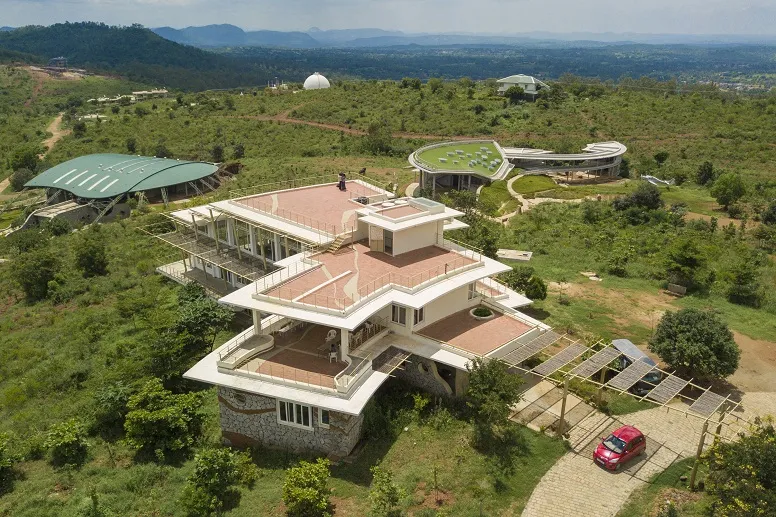
YS: What are the challenges in replicating and scaling this model elsewhere across India?
RR: The main challenge that Agastya faces is how to scale and replicate its proven model without its direct intervention. In other words, how might Agastya evolve from being a scaled NGO to an NGM (Non-Government Movement). This might require new partnerships and alliances, heightened media and public interest, more self-learning tools and techniques and enhanced support from governments.
The main challenge is systemic inertia in the education system and the excessive focus on ‘knowing how to answer’ and grades -- not money and resources (most of Agastya’s ideas can be replicated with everyday available materials).
YS: What are your plans for the coming 5-10 years?
RR: We have plans in areas such as content, delivery and audience.
- Content
- Creating new intersections of knowledge between science, art and the humanities, e.g. design poetics, humanistic science and so on.
- Making the Kuppam campus a centre for hands-on workshops for students of all ages.
- Executing design thinking at scale.
- Delivery
- Leveraging digital technology to create a unique blended learning experience (digital as well as hands-on) for millions.
- Greatly expanding the number and scope of Agastya’s existing delivery channels (mobile science lab, Lab-on-a-Bike, Science Center, Young Instructor Leaders, night village schools, teacher training).
- Being at least 10X to 20X of where we are, not in terms of money spend, but in terms of positive reach and influence.
- Target audience
- Expanding both downward toward younger children (Grades 1 to 4) and older students (Grade 10 through university).
- Focusing more proactively on parents.

YS: What are your recommendations to government and industry on improving education?
RR: The most important recommendations are:
- Infuse curiosity and creativity in learning through hands-on experiential methods.
- Introduce peer-to-peer learning on a massive scale, this will raise self-belief and confidence and improve children’s communication and leadership skills.
- Connect classroom learning to real life through project-based and theme-based learning.
- Make teacher training come alive by enabling teachers to construct knowledge and learning collaboratively with students.
- Introduce the principle of design thinking into all of the above.
- Not to assume that digital learning will transform the classroom, rather to leverage and blend digital with hands-on learning.
YS: What are your parting words of advice to the aspiring entrepreneurs out there?
RR: What you do can, and will, impact your society, country and the world. Believe that. In the short term, it is easy to copy and make money. Don’t do that. Instead, try and authentically address the major gaps you find in any domain(s).
Invest time in building your ability to communicate with others. Approach your enterprise with the spirit of discovery, experimentation and innovation. Most importantly, try and find, and/or connect your mission to a larger purpose. This will infuse your work with an energy and passion that will make it long-lasting and impactful.
Live and spread the spirit and magic of Aah! Aha! Ha-ha!
